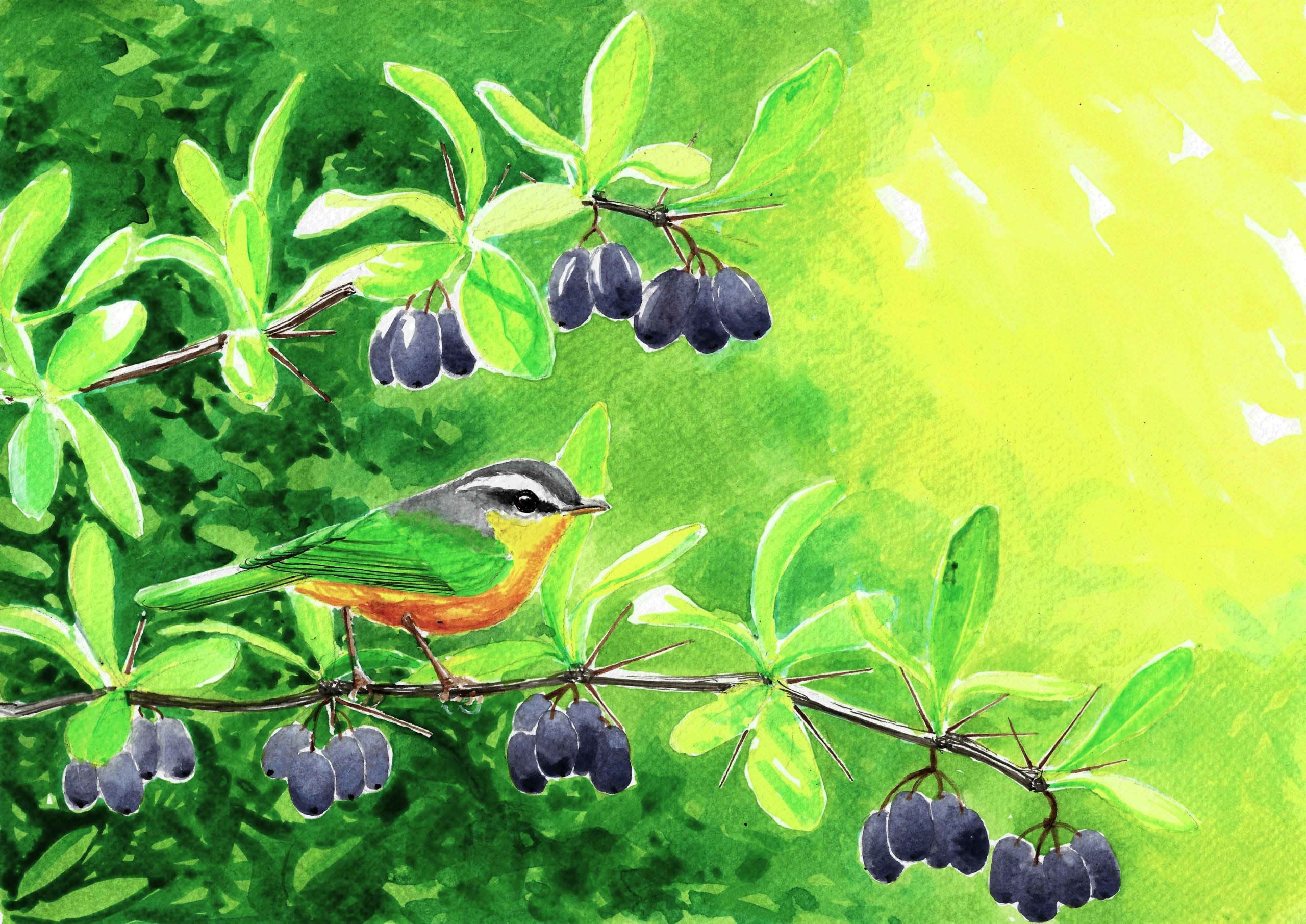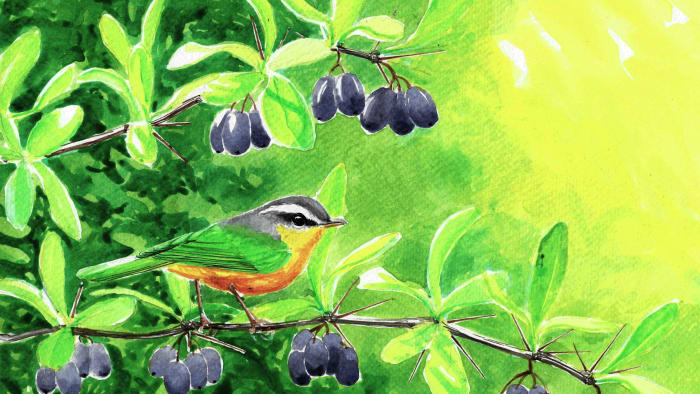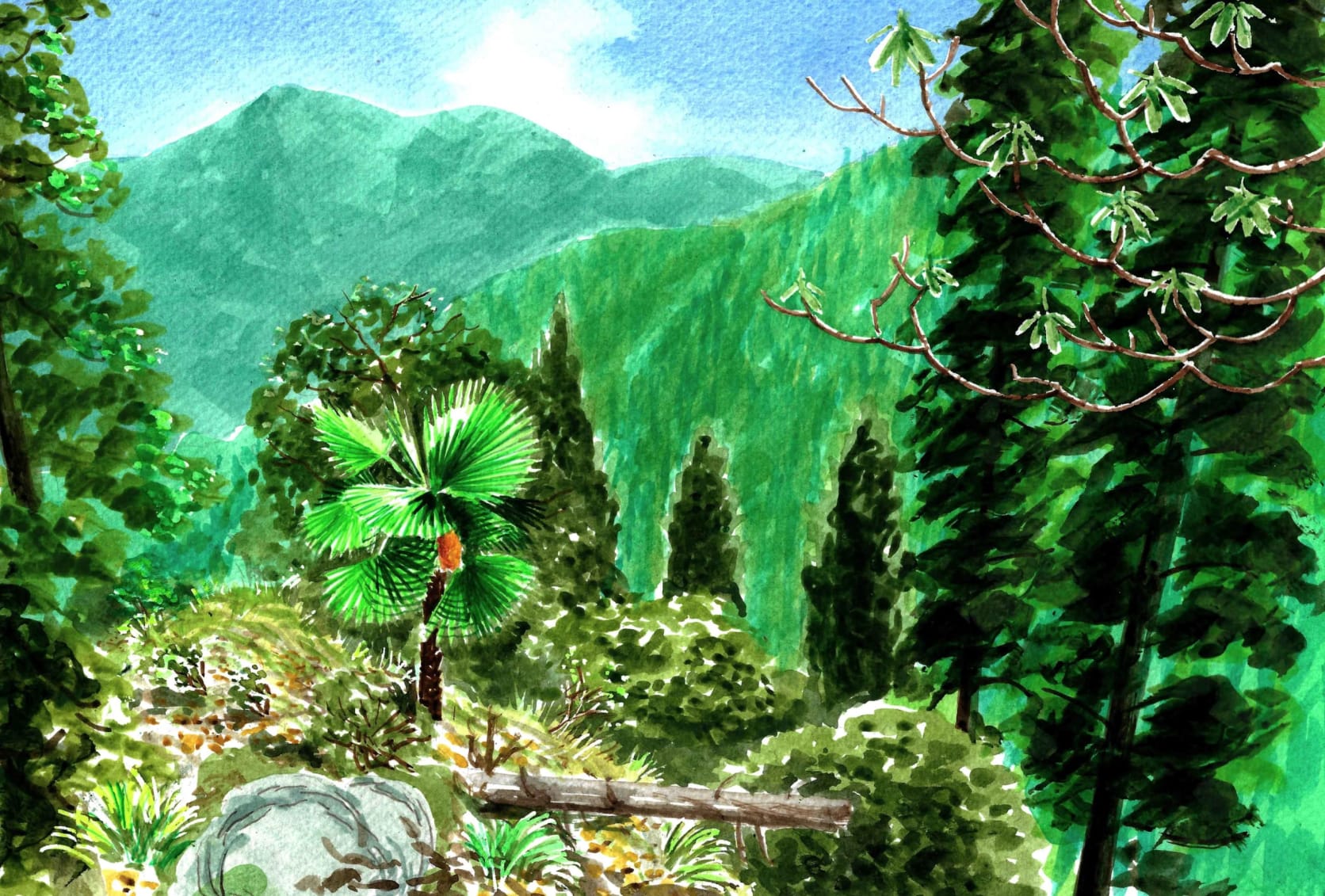 Listen to this article
•
15:34 min
Listen to this article
•
15:34 min
“Berberis are like warblers,” said Navendu, “you have to know exactly what you’re looking for, or they all look the same.” Berberis is the generic name for barberries — thorny bushes with edible yellow, red or blue-black berries. Warblers are thumb-sized birds, and different species are notoriously hard to tell apart. But as a scientist at the Wildlife Institute of India, Dehradun, Dr Navendu Page knew what he was talking about. He is a plant ecologist with a special interest in biogeography — the distribution of plants across geographic space and the hypotheses about how they came to be there.
Accompanying us was Priti Bangal, an avid birdwatcher who works with Nature Conservation Foundation (NCF), and our guide, Shivam Kishwan, a PhD scholar at the Forest Research Institute (FRI), Dehradun, who has travelled these areas extensively.
We were in the Kumaon region (eastern Uttarakhand) looking for plants that were interesting biogeographically – i.e., rare, endemic, or endangered species whose presence tells you something about their habitat or whose geographic distribution holds clues to their evolutionary origins — and barberries were on the list.
Barberries are found throughout the temperate and subtropical regions of the world except Australia, with high diversity found in South America and Asia. Fossil evidence suggests that barberries originated in eastern Asia 66-56 million years ago and might have arrived in India 2.5 million to 11,700 years ago, before the last major upheaval of the Himalayas.
In the Himalayas, barberry diversity is higher in the west than in the east. This means that once they made it to the west, barberries continued to slowly change and adapt to their new habitat, becoming so different from each other that they eventually ended up as different species.
Thus, new species originated in the western Himalayas, many of which are even now found only here and nowhere else in the world. One of them, known only from Uttarakhand’s Chamoli and Pithoragarh districts, was described as recently as 2011.

Cover illustration: A grey hooded warbler on a barberry branch. Barberries are as hard to tell apart as warblers.
It was 22nd May 2010, International Day for Biological Diversity, and Dr B S Adhikari, a scientist at the Wildlife Institute of India, along with some of his students, had been invited to speak at the Munsiyari Intercollege.
After the lecture, they walked around the campus, looking at and identifying plants until they came to a barberry that stumped them. Umeshkumar Tiwari, Dr Adhikari’s coauthor on the 2011 paper describing the species, knew that they were looking at something new, and they took pictures and a few twigs as samples.
This was the college from where Dr Rawat, a doyen of Indian botany who retired as the Dean of the Wildlife Institute of India, had graduated. He is much loved and respected by everyone he has taught or worked with, as much for his knowledge as for his gentle manner. The plant was named in his honour: Berberis rawatii.
----------------------------------------
We were on the lookout for any barberry that looked different from those we’d seen already. We eventually found one that could be B. rawatii flowering on the drive down from Munsiyari. However, the final say on its identity would have to wait because it wasn’t listed in the book we were referring to. We had a pdf of A. E. Osmaston’s Forest Flora of Kumaon (1927). Osmaston was a forest officer with the British administration. The book is full of interesting insights and, he says in the preface, took him 13 years to write. For instance, it talks of a species of jamun (Syzigium frondosa), only found “west of the Naini Tal cart road”, which is indistinguishable from the common jamun (Syzygium cumini) in everything except the timing of the blooming of their identical flowers and the ripening of their indistinguishable fruits.
Heading from Munsiyari to Berinag, one has to cross the Kalamuni pass at an elevation of about 2,800 m. There’s a temple at the pass and a walking trail that heads down to a village. The forest is a beautiful mix of oak and rhododendron, interspersed with tall spires of silver fir. But we were looking for something far more unusual for this elevation: a palm. And one that, like the barberries, had probably evolved into its present form right here.
We walked for about 15 minutes through a thick padding of fallen oak leaves before Navendu spotted one down a steep slope, its large fan-leaves glistening in the sun. We zigzagged down to where it stood, glorious in its incongruity, the hardiest palm in the world – thakal (Trachycarpus takil).
The cylindrical trunk was partially covered by the bases of the old, shed leaves and ended abruptly in a little explosion of glossy green leaves that split into numerous stiff leaflets at their ends. Thakal have been planted in the UK and Europe and are able to withstand temperatures as low as -20 degrees C and maybe even lower. And, four specimens someone planted in the yard at a museum in Plovdiv, Bulgaria survived the -27.5 degrees C temperatures in the winter of 1993.
Endemic to eastern Uttarakhand and the adjoining areas of Nepal, it is also called the Kumaon palm. It is also found lower down (till 1,800 m) but not much higher than where we now stood. This was where its ancestors had somehow cracked the secret to surviving under a thick blanket of snow, like the yogis of yore learnt to slow down their heartbeat and patiently await the sun’s return.
The distribution of barberries and the location of thakal palm had told us something about their origins, but there was one plant whose distribution and location is an enigma. The search for this rare and critically endangered plant took us to Patwadangar. The settlement overlooks a steep cliff and is surrounded by lush oak forests, an ideal site for the smallpox vaccine depot set up here in 1904 to produce and supply vaccines to the United Provinces under the British administration. The road leading up to it goes past neat little workers’ quarters reminiscent of another age and is lined with majestic Indian horse chestnuts (Aesculus indica). When in bloom, this medium-sized tree has few equals in the Indian Himalayas. The domed canopy fills up with large, pointy bunches of showy white flowers all pointing outwards — like a massive starburst frozen in time.

We were, however, looking for a plant much smaller than the Indian horse chestnut, the one that gave the place its name — Patwadangar, which means the dangar or slope where patwa (Butea pellita) grows. A relative of palash (Butea monosperma), patwa is a scrambling shrub that is supposed to be medicinally very potent.
Every spring, a particular slope here comes alive with the fresh growth of patwa shrubs that will flower as the summer approaches and then die back in the winter, down to a stout root-stock that lives on. The flowers of palash and patwa are very similar, and the three-lobed leaves differ only in size. If palash’s leaves have been likened to the ears of a sambar deer, then those of patwa are more like an elephant’s.
Found only in the western Himalayas and the adjoining areas of Nepal, patwa was first described from Patwadangar in 1908. The paper describing the species states, “…whether it occurs in places more remote or not, it is certainly restricted in the neighbourhood of Naini Tal to the particular area, less than a mile square…”.
This is quite true even today, more than a hundred years later, with its occurrence reported from just a handful of sites.
We’d thought that by visiting the place, we’d be able to see what made it special. Why was this dangar so favourable for patwa? However, standing there, the slope looked just like any other. The question was further confounded by the presence all around us of the ubiquitous pine (Pinus roxburghii), widespread throughout the Himalayas, and mauwa (Engelhardia spicata), a tree of the walnut family with winged fruits like papery bird feet that grow in garland-like clusters. Mauwa grows from nearly sea level up to 2,100 m and was the most frequently seen tree on the whole trip.
Plant ecology, and especially biogeography, is humbling in that way. It has a way of driving home all that we don’t understand. Tall, dark clouds had been building up all afternoon, and now they began to rumble as the drizzle became more insistent. We walked back, having glimpsed briefly the emotion that must have made Osmaston use these lines by Tennyson as the epigraph for his flora of Kumaon. He may well have been thinking of patwa when he used them:
Flower in the crannied wall,
I pluck you out of the crannies,
Hold you here, root and aII, in my hand,
Little flower–but if I could understand
What you are, root and all, and all in all,
I should know what God and man is.







